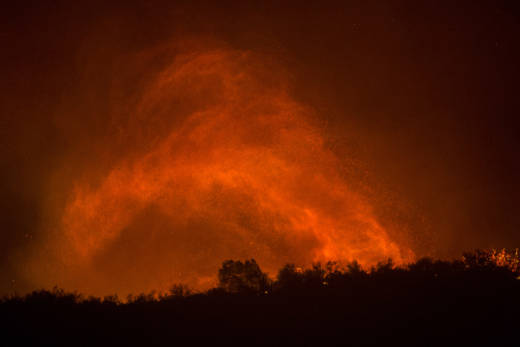As crews across California battle more than a dozen wildfires—including the largest in state history—the blazes are spewing enough carbon into the air to undo some of the good done by the state’s climate policies.
What’s even worse: Climate-warming compounds that will be released by the charred forests long after the fires are extinguished may do more to warm up the planet than the immediate harm from smoky air.
Scientists say that only about 15 percent of a forest’s store of carbon is expelled during burns. The remainder is released slowly over the coming years and decades, as trees decay.
That second hit of carbon, experts say, contains compounds that do more to accelerate climate change than those from the original fire. And future fires over previously burned ground could make climate prospects even more bleak.
“The worst possible situation is the fire that comes through and kills everything,” said Nic Enstice, regional science coordinator for the Sierra Nevada Conservancy. “Then, ten or fifteen years later, another fire comes through and releases all the carbon left in the trees on the ground. That’s really bad.”
